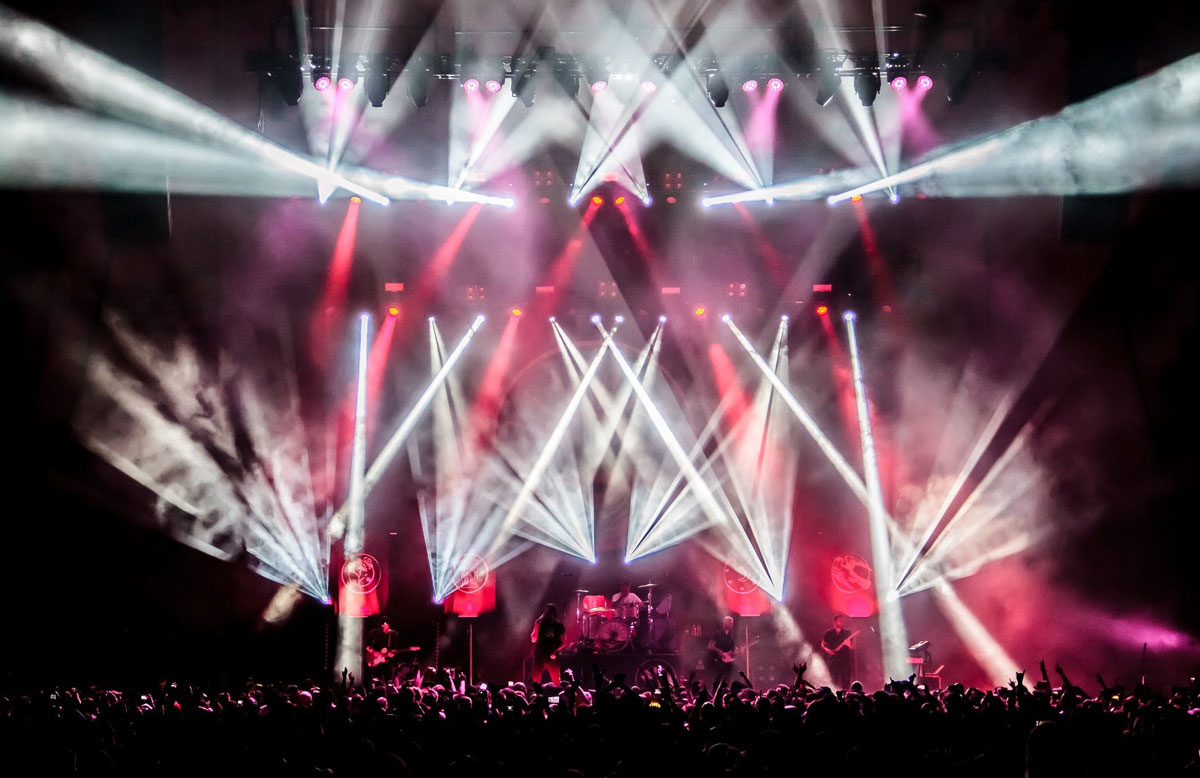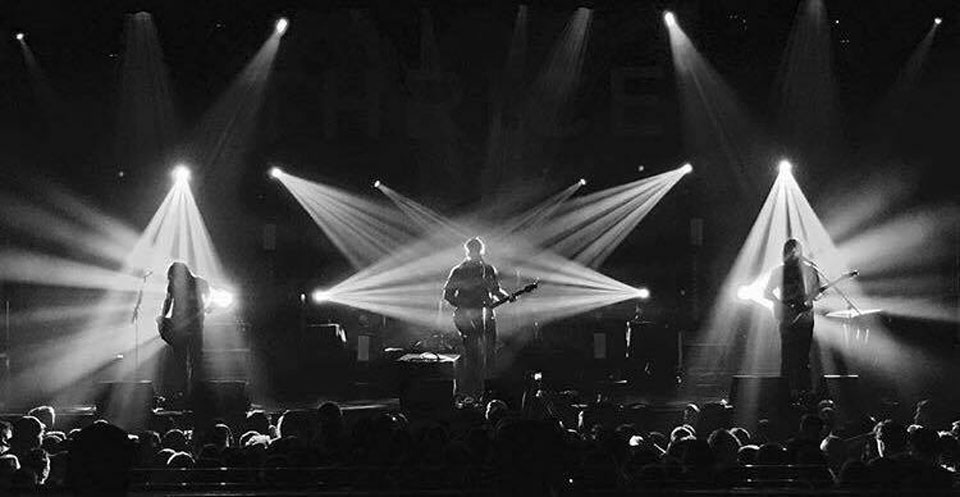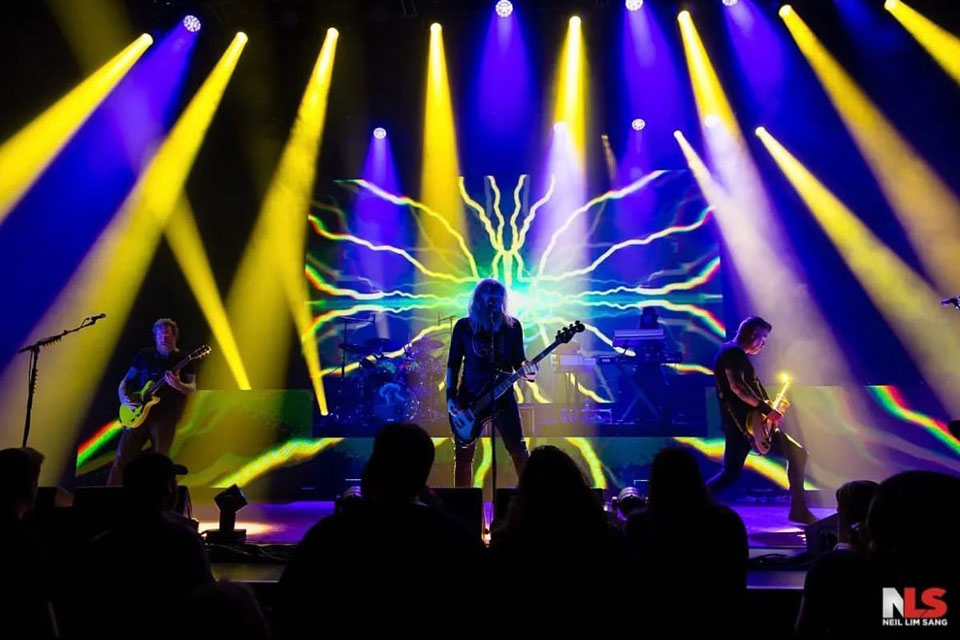Eric Price – Angled Vision
Posted on August 2, 2022
Photo: Victoria Hionis
Ultimately, the story of a lighting design is written in angles. The path light travels before it encounters a performer on stage will determine much about how that artist is revealed. Light angles not only hold sway over the direction of the audiences’ eyes, they also exert a powerful pull over emotions, which is why changing them is one of the most effective ways to transition a show.
Eric Price has always impressed us with the masterful way he’s used light angles, not just to achieve the ends cited above, but also how he manipulates them to add a level of depth and texture to a design, captivating the audience, while supporting, rather than distracting from, the performance on stage.
A much in demand designer who’s worked for Mastodon, Thrice, Motor City Sound Track , Taking Back Sunday and many other bands, Price shared his insights into the evocative power of light angles.

Photo: Victoria Hionis
At a Thrice show you recently lit, you created some really interesting looks crossing light angles from very different directions, some going north-south, others east-west. How did that work?
”That was a fairly specific look for Thrice. But, yes, the idea was to have perpendicular beams converging on the downstage artists. I believe the most important part of that particular look was the gobo indexing.”
That was one of many shows where you use distinctive light angles. So, what does creating unique light angles add to a stage show?
“I think it’s important to draw the audience’s eye to where you want them to look. Sometimes the negative space is more important.”
You also side light artists on stage. Any advice in that area?
“Side lighting the artists is more about keeping them comfortable onstage than anything. Most performers, like people in general, dislike direct light. So, side lighting is a perfect way to get my color wash and some general light on stage without making the artists uncomfortable. This doesn’t necessarily remove the need for traditional front light, it just helps ease how much I need to use front light.”

How about hitting artists with lighting angles up at them from the stage deck? What are your feelings about that?
“It depends on the artist. I find some people dislike toe-lighting more than traditional front light. When I do use it, I’m very careful to go “off axis” with the fixtures. Nothing worse than looking down at guitar peddles only to get a bright LED in your face.”
We saw that at a Mastodon in Cleveland you split beams to send angles in different directions. How did you do that while still keeping light on the band?
“I generally try to fill in the air space and keep things super symmetrical. The stage and room often dictate what I can and can’t do with my positions. When doing my position focus, the most important thing is to light the talent. Every position should have at least one wash and one spot on each performer. I start there and fill in the space the best I can.”
Are some colors better to use in creating crossing patterns of light than others?
“I believe there are some better than others. It can be difficult to get the definition needed out of an extremely saturated color.”

Photo: Victoria Hionis
Do you ever follow a “less is more” philosophy and direct only a few light angles at an artist on a largely dark stage?
“Yes, absolutely! This is important in a dynamic show. I try to find as many times as possible in a set to do a “less is more look”. Solo spots, pauses with lots of silhouettes, anything to change to visual experience all fall into that category. I think dark space or negative space is important also. I’ve always loved the quote by Jerry García ‘sometimes the notes you don’t play are the most important.’”
